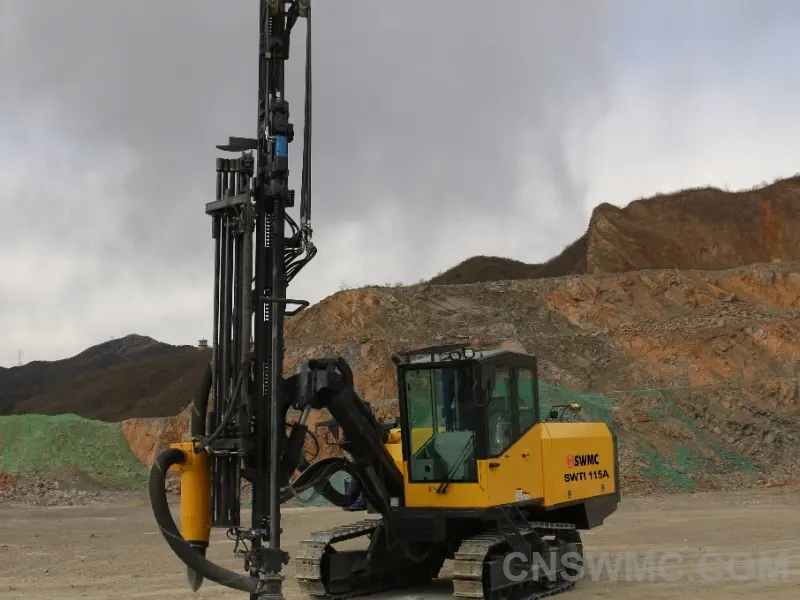Drilling patterns in surface mining play a crucial role in optimizing blasting efficiency, improving fragmentation, and minimizing operational costs. Choosing the right drilling pattern is essential for maximizing productivity and ensuring safety in mining operations. In this guide, we’ll explore the various types of drilling patterns used in surface mining, the factors influencing their selection, and how each pattern can impact the overall mining process.

What is Drilling in Surface Mining?
In surface mining, drilling is the process of creating holes in the rock for the placement of explosives. These holes, also called blast holes, are strategically positioned to break the rock into smaller, more manageable pieces. The precise arrangement of these blast holes—known as drilling patterns—affects how the rock fractures and how efficiently the minerals are extracted.
Why are Drilling Patterns Important in Surface Mining?
The right drilling pattern can significantly impact the success of a mining operation. Drilling patterns determine:
- Fragmentation: How the rock will break when explosives are detonated.
- Blast Efficiency: Ensures that the explosive energy is used effectively.
- Cost-Effectiveness: Reduces the number of drills and explosives needed.
- Safety: Helps prevent accidents by controlling the blast’s direction and force.
Types of Drilling Patterns in Surface Mining
There are several types of drilling patterns used in surface mining, each suited to different types of geological conditions and mining goals. The main types of drilling patterns include:
1. Square Pattern
The square pattern is one of the most common and simplest drilling patterns used in surface mining. In this pattern, the blast holes are drilled in a grid formation, with equal spacing between the holes in both directions. This arrangement allows for consistent blasting and efficient use of explosives.
- Advantages: Easy to execute, low cost, uniform blast results.
- Disadvantages: May not be suitable for harder rock formations.
2. Triangular Pattern
In the triangular pattern, the blast holes are arranged in an equilateral triangle formation. This pattern is often used when the rock is harder or when a more controlled blast is required. It reduces the number of holes needed while still maintaining an effective blasting operation.
- Advantages: More efficient use of explosives, reduced drilling time.
- Disadvantages: May require more precise drilling.
3. Longitudinal Pattern
The longitudinal pattern involves drilling holes along the length of the bench, typically parallel to the mining direction. This pattern is ideal for benches where material needs to be moved in a specific direction or where the geological conditions are favorable for long blasts.
- Advantages: Great for long benches, enhances blast efficiency.
- Disadvantages: Requires careful planning to prevent misfires.
4. Fan Pattern
The fan pattern arranges the blast holes in a fan-like shape, radiating outward from a central point. This pattern is typically used in narrow mining areas or in situations where controlled fragmentation is needed for loading and transport.
- Advantages: Effective for narrow benches, improved fragmentation control.
- Disadvantages: More complex to design and drill.
5. Radial Pattern
The radial pattern involves drilling holes that radiate outward from a central point. This pattern is commonly used when blasting in a circular or semicircular area, such as quarrying or pit mining. It is ideal for achieving even fragmentation and optimizing the blast's energy distribution.
- Advantages: Ideal for circular blasting areas, uniform energy distribution.
- Disadvantages: Requires precise design to ensure uniformity.
6. Shaped Charges or Decking
In some cases, shaped charges or decking are used in conjunction with specific drilling patterns to create more controlled fragmentation. Decking involves layering explosives in the blast holes, while shaped charges direct the energy of the blast in a particular direction, enhancing the fragmentation process.
- Advantages: Enhanced control over fragmentation, better safety.
- Disadvantages: Higher cost, more complex setup.
Factors Influencing the Choice of Drilling Patterns
The selection of the appropriate drilling pattern depends on several factors:
- Geological Conditions: The hardness of the rock, its structure, and the presence of fractures will influence the pattern choice.
- Blast Design: The type of explosives used, the blast's desired effect, and the bench height can all affect the drilling pattern.
- Environmental Considerations: Safety concerns, environmental impact, and vibration control play an important role in pattern selection.
- Cost Efficiency: Patterns that reduce surface drilling rig and explosive costs are often preferred for large-scale operations.
| Drilling Pattern | Cost | Efficiency | Safety | Best Use Case |
|---|---|---|---|---|
| Square Pattern | Low | Moderate | Moderate | Shallow mines, uniform geology |
| Triangular Pattern | Moderate | High | High | Harder rocks, complex geology |
| Longitudinal Pattern | Moderate | High | High | Long, narrow excavations |
| Fan Pattern | High | Very High | High | Multi-directional blasting |
| Radial Pattern | High | High | Very High | Confined, circular excavations |
| Shaped Charges | Very High | Very High | Very High | Underground, sensitive areas |
Maximizing Efficiency with the Right Drilling Pattern
The choice of drilling mining machine pattern in surface mining is crucial for optimizing efficiency, reducing costs, and ensuring safety. By understanding the different types of drilling patterns and the factors that influence their selection, mining companies can enhance their blasting operations and improve overall productivity. Whether you’re working with soft rock or hard formations, selecting the right pattern can make all the difference in achieving optimal results.
FAQs
Q: What is the most common drilling pattern used in surface mining?
A: The square pattern is the most widely used in surface mining for its simplicity and effectiveness in moderate fragmentation.
Q: Can the drilling pattern affect the cost of mining operations?
A: Yes, selecting the right drilling pattern can significantly reduce the amount of explosives and time required, lowering overall operational costs.
Q: What are the advantages of using the triangular drilling pattern?
A: The triangular pattern offers more efficient use of explosives and reduces the number of blast holes needed, making it ideal for harder rock formations.
